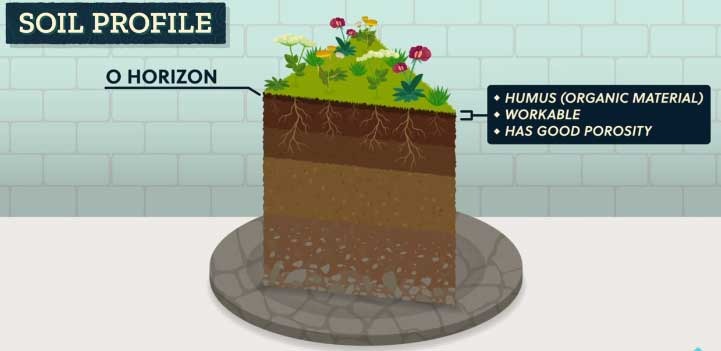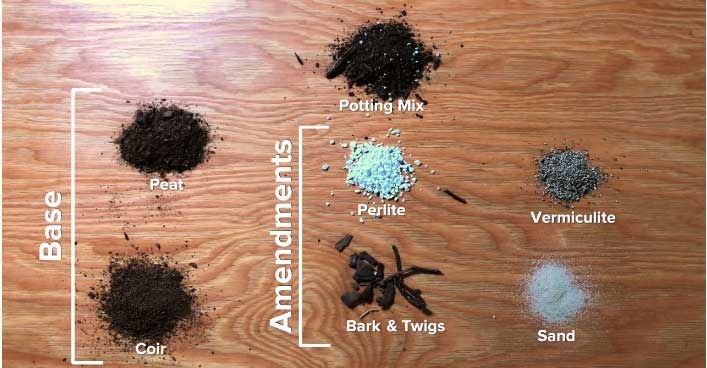Soil Calculator - How Much Soil Do You Need?
Use This Soil Volume Calculator To calculate the amount of soil you need for raised beds, planters, pots, or vegetable gardens.
Calculate the amount of soil you need for your raised bed, pot or planter.
Soil Calculator: How Much Soil Do You Need For Your Raised Bed & Planter Box Garden
Why is Calculating Soil Necessary?To establish a healthy and growing garden, you need to prepare the garden with good plowing, leveling, and measuring. A good soil structure a\not only affects the root growth but also allows the leaves to get proper water and nutrients.
Loose soil with proper nutrients and organic matter lets the plant roots grow freely and accelerate the access to nutrients and water they require for healthy growth.
How to Perform A Soil Calculation?

Before we start the calculation process with examples, let’s learn first how to perform the calculation process. You need a measurement tape and a soil calculator to calculate the soil.
Here is how to do it:
● Take your measurement tape, smart measuring device, or ruler to find out the length, width, and depth of your gardening area. Now, you need to multiply the width and the length to calculate the square footage.
● Then multiply the depth of the area to determine the cubic foot of soil. This calculation can also be done by the standard calculator, in paper and pen, or through our online calculator.
● To learn how many soil bags you require for your garden, you need to divide the total volume by the advertised cubic feet number of soil.
● After determining how much soil you need, fill your garden bed with dirt or just spread it on the ground. Next, you need to mulch the dirt with organic matter to improve the soil structure to make it suitable for planting.
How Many Cubic Feet Of Soil Do I Need?
To calculate how much solid you need for your raised bed, you need a raised bed soil calculator. You need to figure out first the length, width, and height measurement of your raised bed garden.
Then you need to multiply them to determine the necessary soil cubic feet to fill the bed garden.
NOTE: Make sure you take the measurements in feet instead of inches and use a cubic feet soil calculator to determine the result in feet.
How Many Bags of Soil Do I Need for A 4x4 Raised Bed?
To cover a 4x4 raised bed garden, you need 7 bags of soil. Each bag contains 1.5 cubic feet of soil, which means a total of 10.5 cubic feet of dirt for a 4x4 raised bed. This calculation is based on a raised bed garden that’s 8 inches high.
If you don’t know how to plant herb gardens effectively, you can check our beginner guide for herb gardens.
How Much Soil Do I Need For A Raised Bed?

The calculation formula of soil volume may differ due to the shape of your raised bed garden. Before using the formula to determine how much soil for raised bed is needed, you need to know whether you have a square, rectangle, or circle raised bed.
Then you need to figure out the right dimensions of the garden according to the shape in foot to calculate the soil. Using a soil calculator for raised bed gardens instead of pen and paper will make the calculation process easier.
Calculation Formula For Square, Rectangle, And Circular Raised BedsThe calculation formula to determine the soil volume for square or rectangle raised beds is easier compared to other formulas. This soil volume formula uses only three estimations: your raised bed garden’s length, width, and height.
And when you want to calculate the soil for a circular raised bed garden, you need to figure out the radius and height of the garden. Here the radius of the garden is equal to half of the diameter.
1. Formula for rectangle raised bed: [Length x Width x (inch/12)] / 27
2. Formula for square raised bed: [Length x Length x (inch/12)] / 27
3. Formula for circular raised bed: [Result x Result x 3.1416 x (inch/12)] / 27 {Here “Result” is equal to (Diameter/2)}
Suppose your square or rectangle’s raised bed garden’s length is 8 feet long, width is 4 feet, and height is 17 inches. So how much dirt for raised bed is needed in cubic feet is:
Rectangle V = [Length x Width x (inch/12)] / 27
= [8 x 4 x (17/12)] / 27
= (8 x 4 x 1.4) / 27
= 44.8 / 27
= 1.7 cubic yards
Square V = [Length x Length x (inch/12)] / 27
= [8 x 8 x (17/12)] / 27
= (8 x 8 x 1.4) / 27
= 89.6 / 27
=3.3 cubic yard
Suppose the diameter of the circular raised bed garden is 6 feet, and the height is 17 inches, then the circle volume will be:
Circle V =[Result x Result x 3.1416 x (inch/12)] / 27
=[2 x 2 x 3.1416 x (17/12)] / 27 {Diameter 6/2 = Result 2}
=(2 x 2 x 3.1416 x 1.4) / 27
=17.5 / 27
= 0.7 cubic yard
Required Soil Depth For Raised Bed Gardens
Soil depth is essential for determining the soil calculator for raised beds. However, what will be your raised garden’s soil depth will depend on the plants you’re planning to grow.
You must aerate the soil to make it light so that roots get enough space to grow beneath the ground. Here is the list of plants according to the shallow, medium, and deep rooting to establish the accurate depth for your vegetable raised bed garden:
| Shallow Root (12” to 18”) | Medium Root (18” to 24”) | Deep Root (24” to above) |
|---|---|---|
| Cabbage | Beans | Asparagus |
| Cauliflower | Peas | Parsnips |
| Spinach | Carrots | Pumpkin |
| Onion and Garlic | Eggplants | Watermelon |
| Corn | Turnips | Artichokes |
| Strawberries | Chard | Rhubarb |
| Broccoli | Kale | Sweet Potatoes |
| Potatoes | Peppers | Okra |
| Radishes | Cucumber | Tomatoes |
| Lettuce | Rutabagas | Squash |
How To Care For Your Raised Bed Garden?
Just knowing the right amount of soil you need to prepare the raised bed garden isn’t enough to grow vegetables healthily. You need to take care of the garden by providing what your plant needs.
However, make sure you double dig your raised bed garden for better soil aeration and remove all debris and rocks from the dirt.
While planting the vegetable seeds, use vegetable potting soil to make the soil more healthy for vegetables. Similarly, if you choose to plant herbs in the raised bed garden, consider choosing specific potting soil for herbs.
In case, if you don’t want to use store-bought potting soil, you can also make one by yourself by following three easy steps.
After a month of planting, feed your vegetable plants extra nutrition by applying fertilizer. The soil will most likely break over time, but you don’t necessarily have to change the whole soil; instead, remove the old potting soil and apply a fresh one.
If you stay conscious and take care of your vegetable-raised bed garden properly, it won’t be challenging to have a beautiful, vibrant and healthy vegetable garden.
What Should Be The Mixing Soil Ratio
As mentioned above, you should mix potting soil and compost with the existing soil, so it may make you wonder how much potting mix do I need?
That’s why we’re here with the recommended ratio of compost and potting soil that should be mixed with topsoil.
● 10% of potting soil
● 30% of compost
● 60% of topsoil.
How Much Soil For Pot Or Elevated Planter Box?

The calculation formula for various shaped planter boxes is different. Both raised bed garden and elevated planter box’s soil calculation formulas are pretty same; you just need to divide the total volume by 5.6, whereas you divide 27 with the total volume in raised bed garden calculation.
To calculate the needed soil bags, you need to figure your pot’s length, width, and height or elevated planter box. Here you determine the soil measurement in quarters.
Calculation Formula For Square, Rectangle, And Circular Pot Or Elevated Planter BoxThe rectangle and square calculation formulas are different from the circle formula.
To calculate the rectangle and square planter box’s soil measurement, you need to measure the box’s length, width, and height. And when you calculate the circular planter box soil, you need to figure out the radius and height of the box.
Here's the formula for the calculation:
1. Formula for rectangle pot or elevated box: [Length x Width x (inch/12)] / 5.6
2. Formula for square pot or elevated box: [Length x Length x (inch/12)] / 5.6
3. Formula for circular pot or elevated box: [Result x Result x 3.1416 x (inch/12)] / 5.6 {Here “Result” is equal to (Diameter/2)}
How To Convert Cubic Feet To Quarts?
It’s pretty simple to convert the cubic feet measurement into quarts. Mathematically, 29.922078 quarts are equal to 1 cubic foot. So to convert into quarts, you need to multiply the cubic feet volume with the conversation rate.
So the formula is:
● Quart= Total Cubic Feet x 29.922078
Let us explain it with an example.
Suppose you need 6 cubic feet of soil for an elevated planter box. But the soil calculation for the planter box should be complete in quarts. Now to figure out Quarts, you need to multiply the conversion ratio by the total cubic feet. So you need:
● 6 ft3 = 6*29.922078 = 179.532468 Quarts of soil
Required Soil Depth For Pot Or Elevated Planter Box
No matter whether you plant vegetables in a planter box, raised bed garden, or in the ground, the root depth for plants won’t change. Therefore, the soil depth for a pot or elevated planter box is similar to the raised bed gardens.
Fill The Elevated Planter Box With Right Mix
After determining how much soil you need through our pot soil calculator, you need to know how much other soil you should mix with the native soil.
However, using the coast of Maine soil for vegetable and flower gardens can help you to build the healthiest garden possible. It’s because this soil is rich in nutrients and maintains an accurate pH level of soil that accelerates the healthy growth of plants.
On the other hand, if you choose to plant succulent or fiddle leaf fig in a pot or planter box, you need to choose soil for succulent and soil for fiddle leaf fig individually.
The process of taking care of your plants in a planter box or pot is also similar to raised garden beds. You just need to mix a different soil planter box with a different ratio.
Generally, you should mix about:
● 10% of vermiculite
● 40% of compost
● 60% of topsoil
You can also make a DIY potting mix for your planter box garden. Bring a tarp and pour the ingredients to mix them efficiently. Here is the recipe for the DIY mix:
● 1/3 peat moss
● 1/3 vermiculite
● 1/3 compost
However, make sure your liners are in place before pouring the soil. Generally, liners are important to protect the wood planter from rotting and metal planters from rusting. You also need to have landscaping fabric for the raised bed and elevated planter gardens.
So after going through the above calculation method, you must have cleared your confusion about how much soil do I need for my garden. Now the only thing left is for you to start growing your vegetables in a raised bed garden and planter box healthily. Happy gardening!